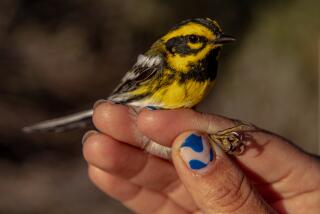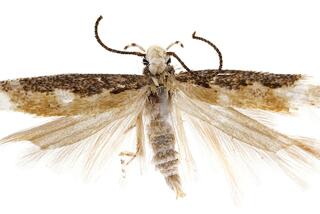A ‘notch’ by any other name
THE DISCOVERY of genes was one of the triumphs of 20th century science. Tens of thousands of genes in scores of organisms have been identified, investigated and described. They have been given names, from the tediously opaque (CD120b) through the simply straightforward (yellow) to the deliberately wacky (swiss cheese). But gene names not only amuse or confuse, they sometimes tell us something about what the gene actually does.
The first genes to be identified were found nearly 100 years ago by Thomas Hunt Morgan in the tiny fruit fly, Drosophila. They all related to a specific part of the fly’s anatomy -- olive body, notched wings or white eyes -- and the genes that seemed to underlie each of these characters were given an appropriate name: olive, notch, white.
Researchers subsequently became evermore whimsical, with gene names reflecting fads or obsessions. Ether a go-go was discovered in the 1960s (flies shake their legs when anesthetized with ether), while sonic hedgehog -- a vertebrate gene similar to the fly gene hedgehog -- was named after the video-game character in the early 1990s. Bride of sevenless -- a gene that interacts with another gene, sevenless, in the development of the insect eye -- refers to 1930s horror movies, and a gene mutation that removes the external genitalia from flies of both sexes is called ken and barbie after the famously sexless dolls.
My own favorite is voila, a gene discovered by French researcher Jean-Francois Ferveur. Seemingly innocuous, the abbreviated name in fact conceals a piece of juicy French slang. Male flies from this line will try to mate with both males and females; the full name for the mutation is a French phrase for bisexual: “a la voile et a la vapeur” -- “by sail and by steam.”
In contrast, human genes tend to be given straightforward names, such as MT1. Although this might suggest that human geneticists have no sense of humor, the role of tradition is probably more important. Fly folk are used to joking about their work; those working on human disease, less so. As an Australian researcher, Dr. Ken Maclean, has pointed out, it would be disconcerting for a patient to learn that she was ill because of a defect in her sonic hedgehog gene. MT1 sounds more serious.
But even a simple name can cause problems. There are at least 11 human genes called MT1, each with a different function. Things get more complicated when you compare genes across species. There is a human gene, PMS1, which is involved in repairing DNA in the cell. It has an equivalent in yeast, which is helpfully called PMS2. Yeast also has a PMS1 gene, but that, of course, is the equivalent of the human PMS2 gene.
Going back to Morgan, scientists have generally named a gene after some aspect of its apparent function, often revealed through the creation of a mutation. But the underlying function of a gene is frequently very different from that suggested by its name. For example, some notch mutations create small indentations in a fly’s wing. But notch does much more than this: It plays a fundamental role in the development of all animals -- including humans -- allowing cells to talk to each other.
Molecular genetics enable us to predict the protein produced by a given gene, but we still do not understand why genes are turned on at particular places at particular times, nor can we be certain exactly what that protein will do. Many genes turn out to have different effects in different tissues. This indicates that gene names, whether they are fun or serious, are generally an example of what philosophers call the nominalist fallacy -- the idea that to name is to explain.
Naming an object -- be it a gene or an organism -- is generally only the beginning of understanding it. But only on condition that we realize that the name may conceal as much as it reveals.






